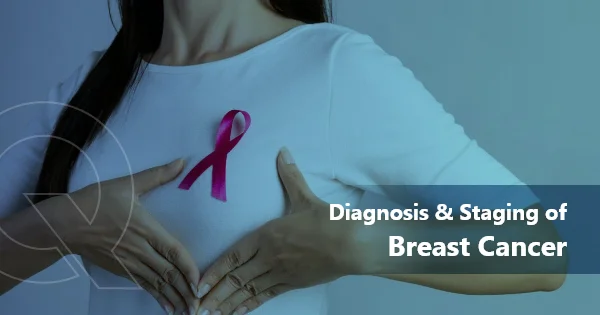Breast cancer accounts for 23% of all cancer cases and is the most common cause of cancer in women. A woman has a 13% lifetime risk of developing invasive breast cancer, with more than one million women diagnosed with breast cancer every year in the world. A biopsy is used to definitively diagnose breast cancer.
Contents
 Types of breast biopsy procedures:
Types of breast biopsy procedures:
Fine Needle Aspiration Biopsy: A very thin needle is placed into the lump or suspicious area to remove a small sample of fluid and/or tissue. No incision is necessary. A fine needle aspiration biopsy may be performed to help to differentiate a cyst from a lump.
Core Needle Biopsy: A large needle is guided into a lump or suspicious area to remove a small cylinder of tissue (also called a core). No incision is necessary.
Surgical Biopsy (Open Biopsy): A surgeon removes part or all of a lump or suspicious area through an incision into the breast. There are two types of surgical biopsies: an incisional biopsy, where a small part of the lump is removed, and an excisional biopsy, where the entire lump is removed.
Lymph Node Involvement
Before or during surgery to remove an invasive breast cancer, the doctor removes one or some of the underarm lymph nodes so they can be examined under a microscope for cancer cells.
Ductal Lavage
For women who are at high risk for breast cancer, a procedure called ductal lavage may be used. Ductal lavage is a procedure that collects cells from inside the milk ductal system – the location where most breast cancers begin. Ductal lavage technique is used to detect pre- cancerous and cancerous breast cell changes in women who are at high risk.
Staging Breast Cancer
Once the clinician has diagnosed breast cancer, the next step would be to establish the extent (stage) of cancer. The patient’s cancer stage helps determine prognosis and the best treatment options. Complete information about cancer’s stage may not be available until one undergoes breast cancer surgery. Tests and procedures used to stage breast cancer may include:
- Blood Tests, such as a complete blood count
- Mammogram of the other breast to look for signs of cancer
- Breast MRI
- Bone Scan
- Computerized Tomography (CT) Scan
- Positron Emission Tomography (PET) Scan
Not all women will need all of these tests and procedures. The doctor selects the appropriate tests based on patient’s specific circumstances. Breast cancer stages range from 0 to IV, with 0 indicating cancer that is very small and non-invasive. Stage IV Breast Cancer, also called metastatic breast cancer, indicates that the cancer that has spread to other areas of the body.
To know more about status and tests related to Breast Cancer, Click on http://blog.oncquest.net/?p=93





